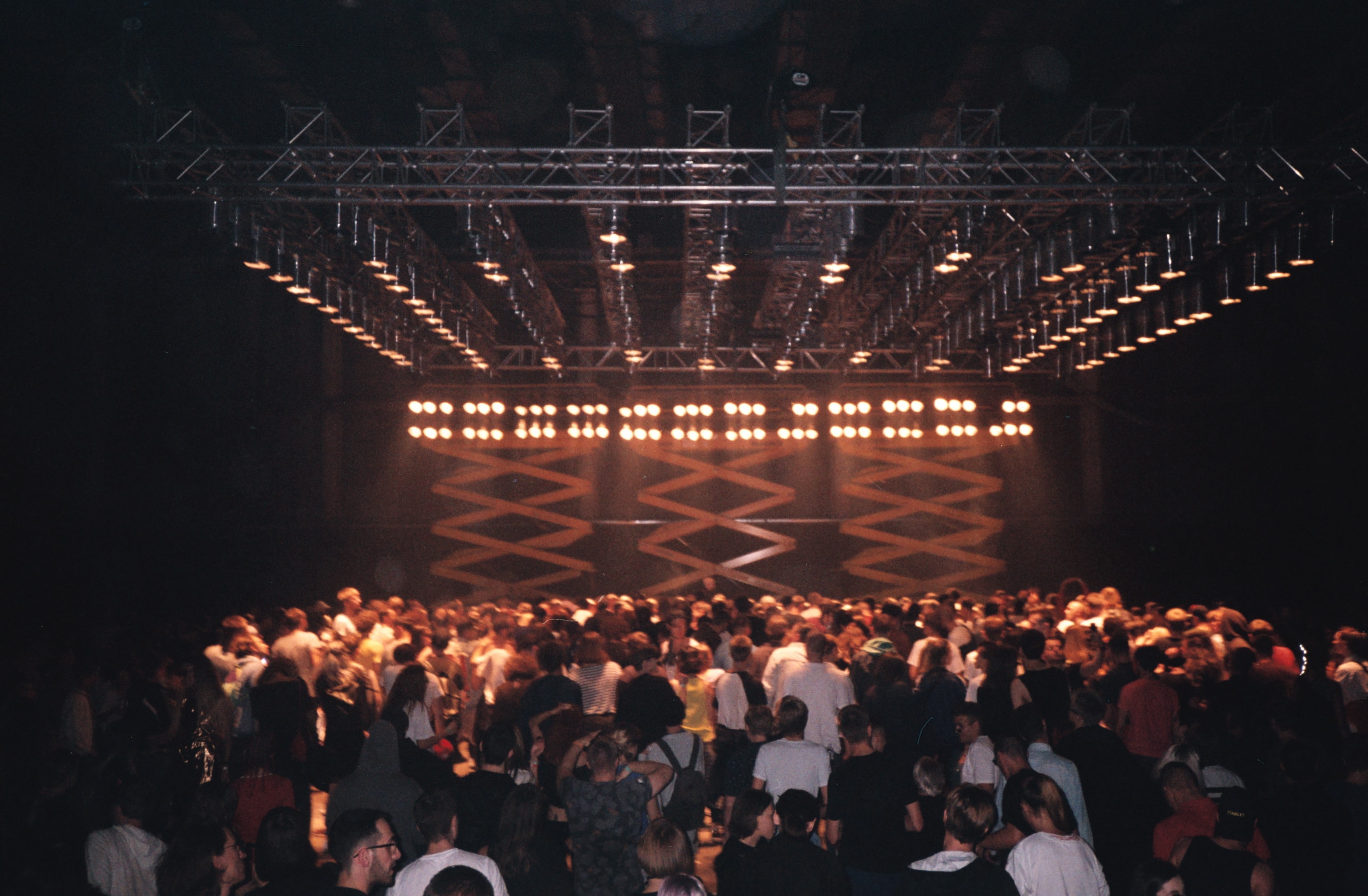When you are put in a situation of raised expectations and demands,
there is a feeling that it is impossible to get out of this trap. But
for a cultural phenomenon which Cxema grew into, such a scenario
turned out to be inevitable.
Over the years, a lot has changed: from DIY parties Cxema has been
transformed into a large-scale project, which now takes two months of
continuous work to prepare.
In total, about 80 people work on one event. The team consists of operational director, producer, designer,
communications manager, programmer, administrator, bar manager,
stageman, assistant and accountant. And also partners: Forma
architects, lighting artists Blck Box and Firma lawyers. One event
requires efforts of numerous professionals including cashiers,
bartenders, cleaners, safe-control, guards, volunteers and experts
engaged in sound, light and installation work. There has also been an
international side project called Cxema Backstage,
which was held eight times outside Kyiv: in Lviv, Berlin, Warsaw,
Leipzig, and Vilnius. Moreover, Cxema conducts a
series of podcasts backed by
interviews, which provides an impressive collection of electronic
music.
Many are likely to believe that all projects have a certain lifetime.
At some point,
the story concludes and it tends to happen at the peak of its
development.
Multiple examples are illustrating such tendency, as numerous clubs,
festivals and parties, reach their best, face a crisis of ideas,
commercialization and the subsequent decline.
At first glance, it may seem that the Cxema has also fallen into the
trap of endless expansion, which can mean both prosperity and slow
death. However, today, it appears that the project invents itself
anew.
Instead of the former artisanal image, the parties have got a new
form,
which differs from everything that is happening not only in Kyiv but
also far beyond its frontiers. The main point is that a honed
organization and a radically new course in the case of Cxema are not
at all in disagreement with what everyone is used to love about it -
the atmosphere of an illegal rave, where everyone is free from
limits and prejudices.















-min.jpg?1530465233285)















.jpg?1531340365602)


.jpg?1531339572181)
.jpg?1531340675058)




-min.jpg?1530465232923)
-min.jpg?1530465232367)
-min.jpg?1531341077987)
-min.jpg?1531341168618)

-min.jpg?1531341309645)
-min.jpg?1530465232850)

-min.jpg?1530465234071)
-min.jpg?1531341452833)
.jpg?1530465234825)
-min.jpg?1530465234346)
-min.jpg?1531341585874)
-min.jpg?1530465256553)
-min.jpg?1530465256641)
-min.jpg?1531341760963)
-min.jpg?1530465266566)
-min.jpg?1531341888163)
-min.jpg?1530465260423)
-min.jpg?1531342046403)
-min.jpg?1531342141252)
-min.jpg?1530465260422)
-min.jpg?1530465261749)
.jpg?1531342272408)
-min.jpg?1531342324814)
-min.jpg?1531342409839)
-min.jpg?1530465326496)
-min.jpg?1530465326739)
-min.jpg?1530465326893)
-min.jpg?1531342610203)
-min.jpg?1530465327340)
-min.jpg?1531342674824)
-min.jpg?1531342721555)
-min.jpg?1531342777669)
-min.jpg?1530465329336)
-min.jpg?1530465329338)
-min.jpg?1531342882041)
-min.jpg?1531342970753)
-min.jpg?1531343059048)

-min.jpg?1530465341514)
-min.jpg?1531343197210)
-min.jpg?1530465340916)
-min.jpg?1530465341118)
-min.jpg?1530465340640)
-min.jpg?1530465341321)
-min.jpg?1531343339867)
-min.jpg?1531343402021)